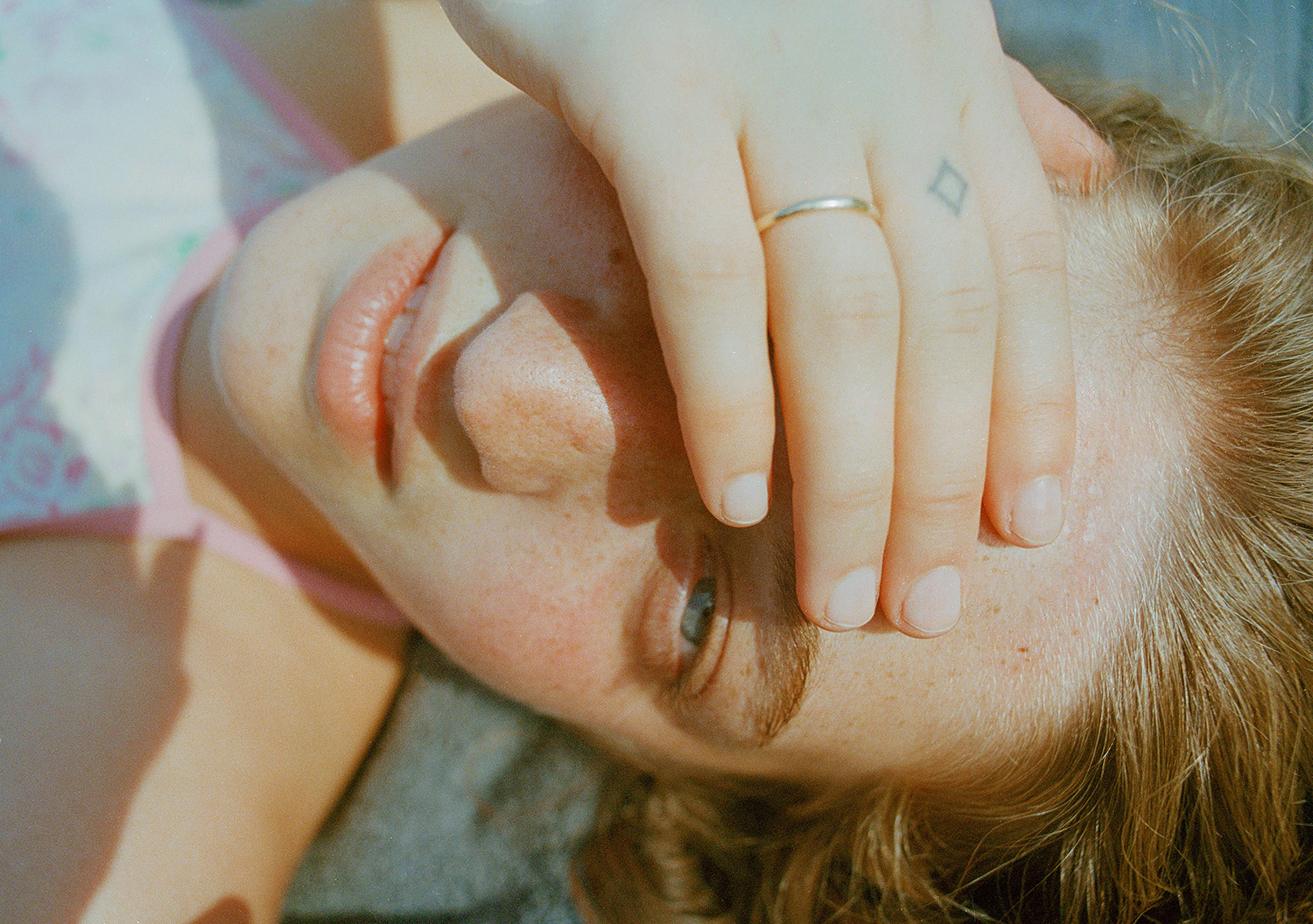A few years ago, while J Houston was living in Pittsburgh, Pennsylvania, they were making prints in the lab at the Silver Eye Center for Photography. They had been shooting portraits of their trans and queer friends on large format film and printed the images on velour when the gallery manager stopped by and struck up a conversation, which gave the photographer pause for thought. Looking at the prints one by one, he asked why Houston used velour when much of the pictures’ details were lost to the material before adding: “It seems like you just want to make beautiful photographs, and sometimes that can just be enough.”
“I was pretty stumped,” Houston says, “I had used the velour because it reminded me of pulling queer materiality into bright daylight, but when I actually went back to think about it, I realised it didn’t actually make sense because it poached the images of their richness. [It made me realise] that at least for this project and the ideas behind it, I didn’t want to erase the beauty of the dense images shot on large film of the trans people in the photographs.”
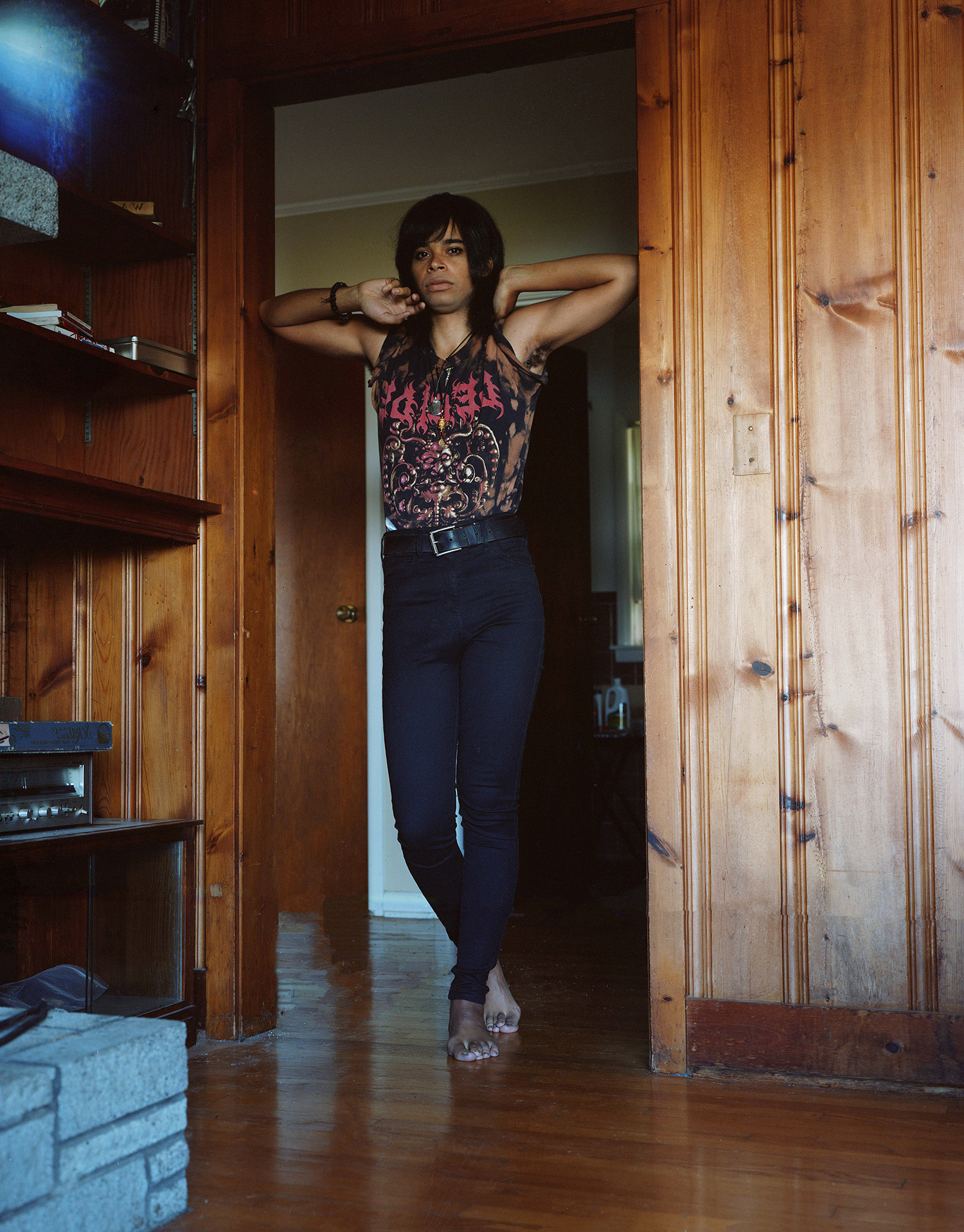
After beginning their journey in art via sculpture and more abstract disciplines, they hadn’t previously viewed their photographic work through the purely aesthetic value of the images themselves. But having gone through their own transition – and the long, oftentimes painful process of coming to terms with their new body and gender identity – the idea that something, or someone, could just be beautiful without any extra baggage was itself a powerful statement.
“I was coming from this performance, conceptual background and to me, that was the antithesis of beauty. I can’t just make something beautiful to be beautiful. Then I was like, ‘Oh, I guess I can’. I was seeing my own body constantly and wasn’t always happy with where I was at in my transition, and I knew my friends sometimes felt the same, so it was just nice to make those images in that context.”

Their soon-to-be-published photobook, Tuck and Roll, is the culmination of eight years of work. Published by GOST, it draws upon an archive of thousands of intimate, warm portraits of Houston’s trans friends and siblings taken across the American Midwest in Pennsylvania and Michigan, as well as upstate New York. Inside its pages are nostalgic coming-of-age shots of trans youth, replete with references to queer nightlife and presentation techniques, including taping and the titular tucking. In the process, the pictures create a rich, magical universe of trans people and siblings – a utopian community where being beautiful is enough.
Alongside the portraits are surreal shots of objects and surroundings, from chairs stacked strangely to yoga balls arranged in an unexplainable, disquieting fashion by a couch. Drawing influences from the magical realism literary genre and authors such as Isabel Allende, the pictures create an immersive visual world set across the book’s pages. “The project has changed so many times, but I was just photographing friends and figuring out I was trans,” Houston says. “It started out as a queer project [where] I was just like, ‘I want to photograph friends in the moment while we’re transitioning’, and then it develops more into [being] about having a lack of safe spaces outside, and then applying this lens of magical realism – making magic in the every day and [creating] this fantasy world.”
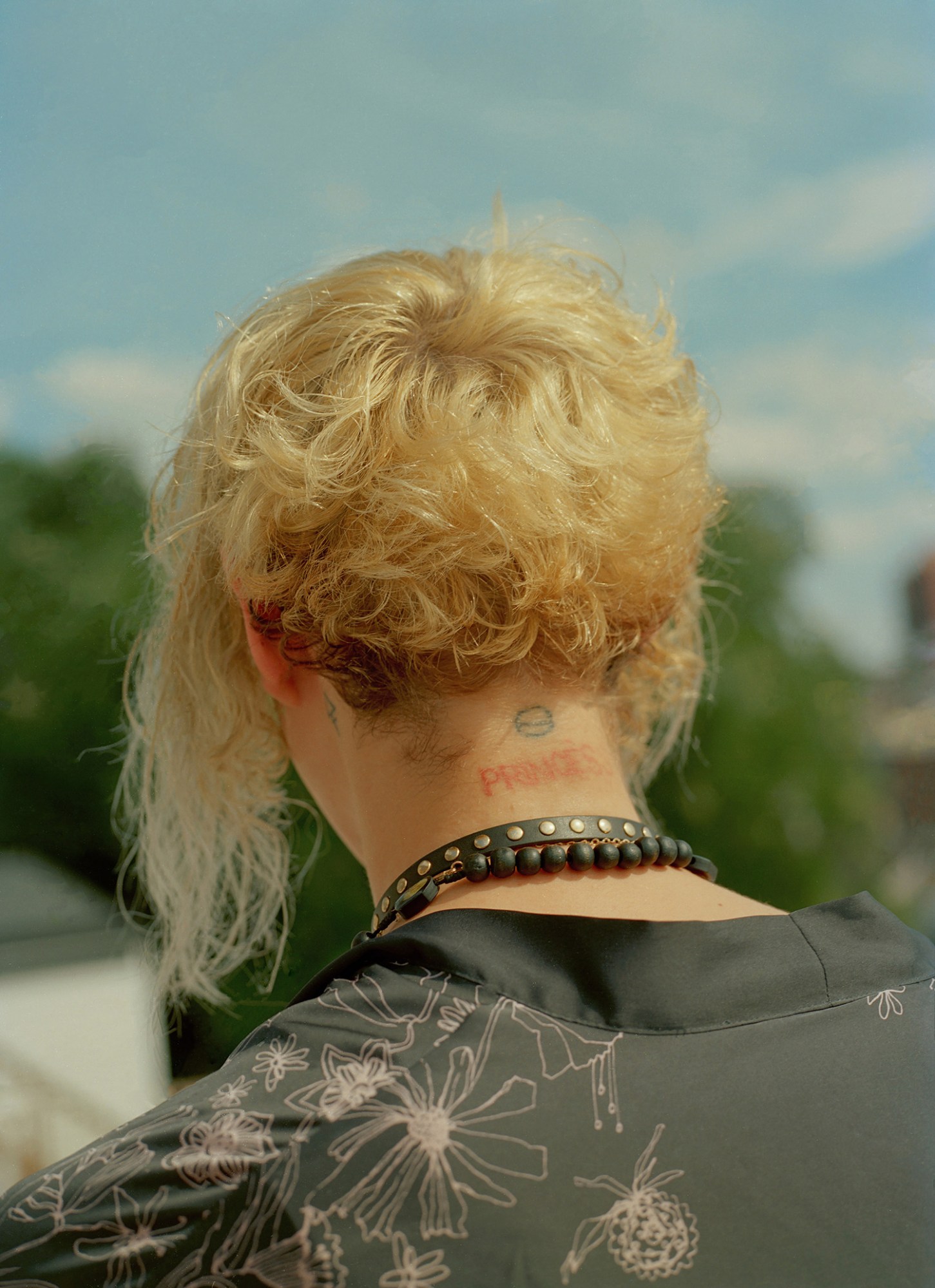
The photobook comes at a time when trans identity and people are coming increasingly under attack. Anti-trans violence is on the rise, with a 2022 report finding that homicides of trans people had doubled between 2017 and 2021 in the US. It’s why creating such a safe space, even if it exists only in the photographs and the imagination, was so important to Houston. “I never want to speak for everyone, but I do think with that language comes a lot of shame and hate for yourself,” Houston says, commenting on the growing presence of anti-trans rhetoric in the public sphere. “So to me, being able to use photography to make the world that we’d like to see ourselves, even physically as we want to be seen, is a hard thing to do.
“It made me realise that this project also had a practical purpose,” they continue. “That it’s really powerful to see yourself the way that you want to be seen, especially when everyone’s telling you that not only should you not exist, but you’re ugly – all that language comes back in developing the lens that you see yourself through.”

To fight against some of the struggles the trans people face in everyday life, it was crucial that Houston’s sitters saw themselves as beautiful in the images. Through working closely with those in front of the lens during shoots, building bonds, and ensuring that they consented to how the images were used, they subverted several traditional pillars of picture-making. “The history of photography is very rooted in the idea of dropping into places, documenting and then leaving. Even if it was [documented] thoroughly, I never wanted that, so I think that’s why there’s this intimacy that comes with a level of trust.”
And that’s what utopia is to Houston. It’s not necessarily a world of equality and happiness, but just somewhere to exist comfortably. “I’m just so conscious of the way I’ve been perceived leaving the house, so [utopia] would be whatever space I’ve created in my home, being able to extend that,” they say. “There’s this joke that early on the pandemic everyone was like, ‘This is awesome, I don’t have to be perceived’, and that’s just really what I want – I don’t want to constantly be questioning: ‘Am I okay in this space? Should I look different? Should I act different?’
“It wouldn’t necessarily be getting rid of all these elements of reality – even the messy ones,” they finish. “I still like those things and the uncomfortableness of just living is important, but I think there’s just this extra layer that I would love to get rid of that would make it easier to move through the world.”
‘Tuck and Roll’ by J Houston is published by GOST Books
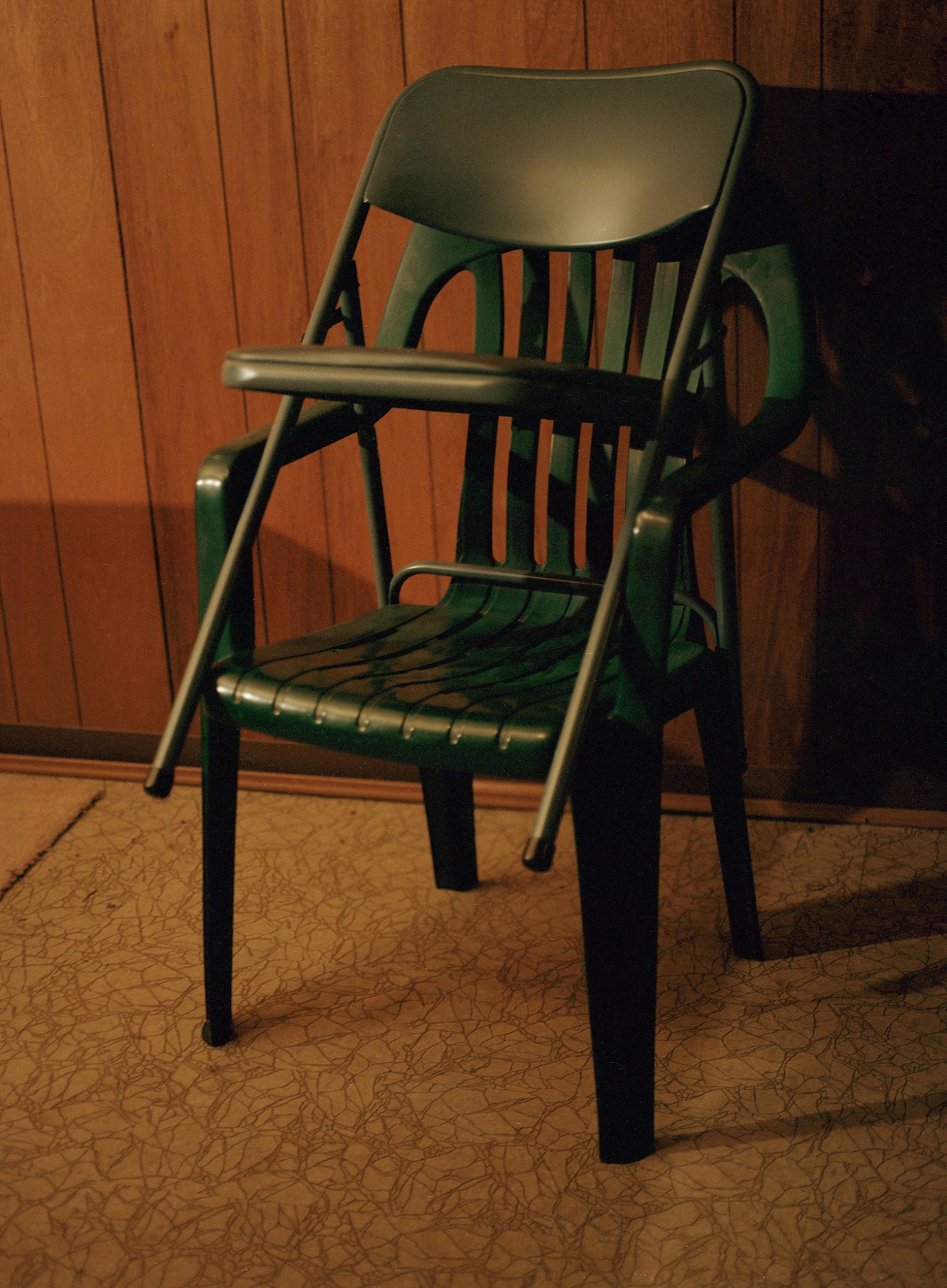
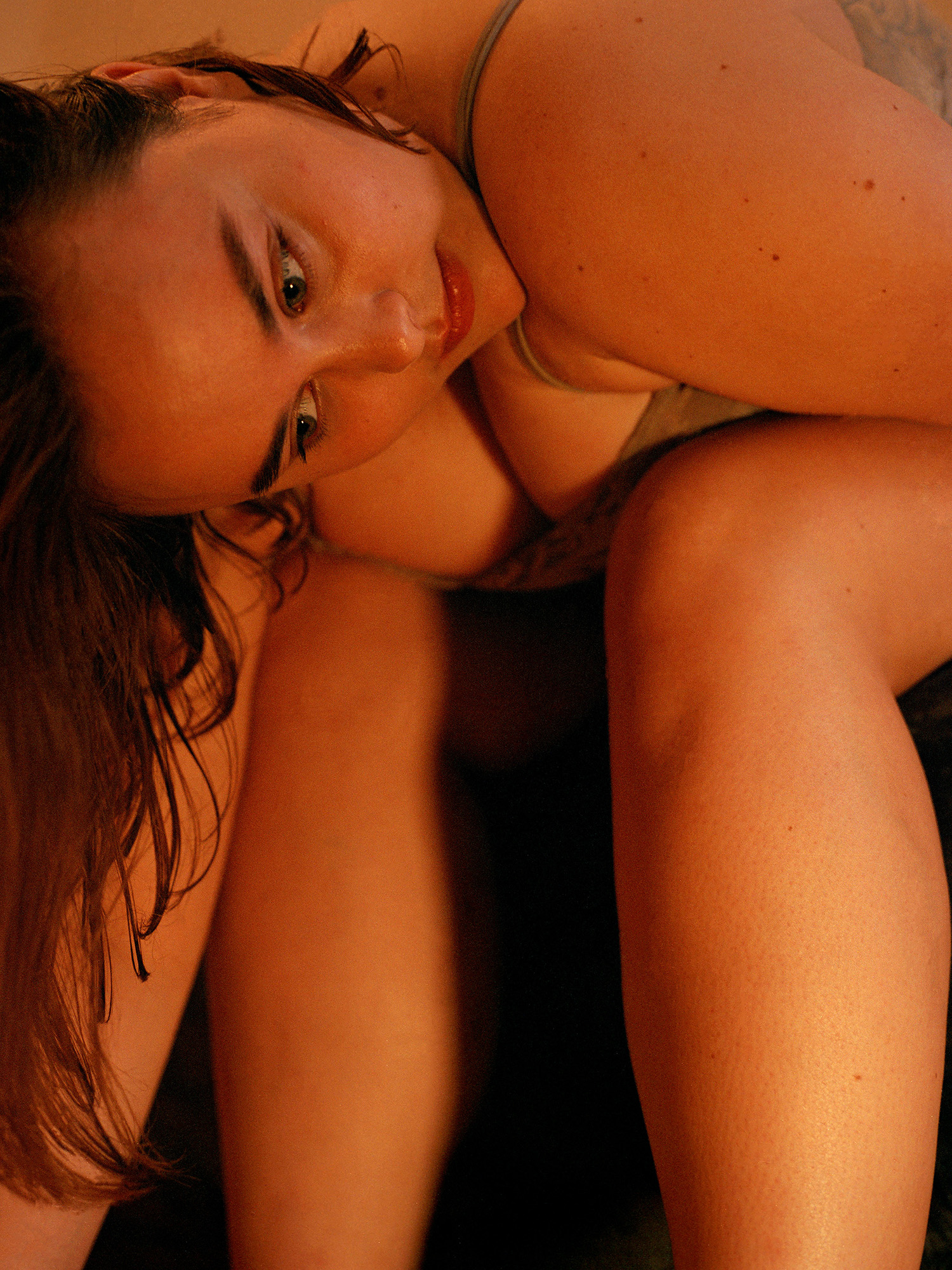

Credits
All images courtesy of J Houston
